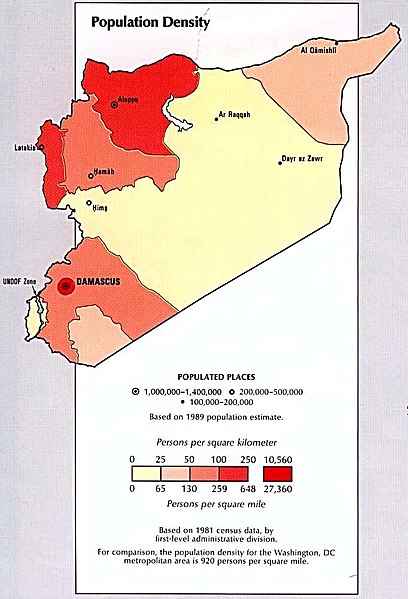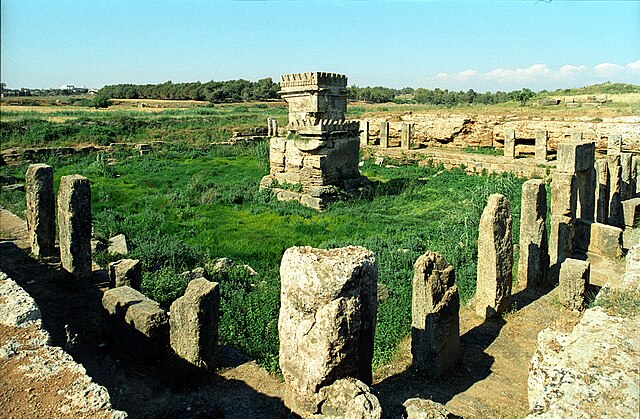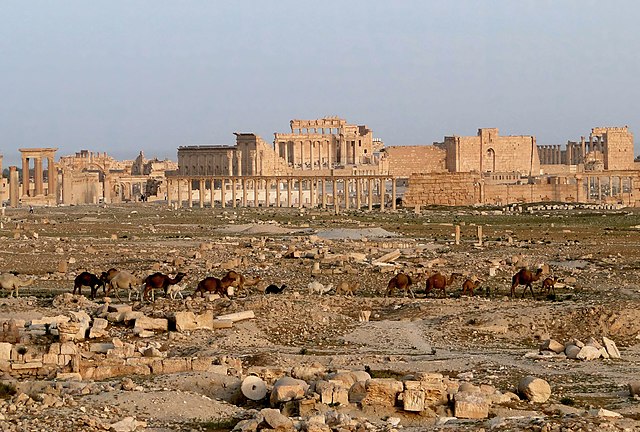Syria's estimated pre–Syrian Civil War 2011 population was 22 ±.5 million permanent inhabitants, which included 21,124,000 Syrians, as well as 1.3 million Iraqi refugees and over 500,000 Palestinian refugees. The war makes an accurate count of the Syrian population difficult, as the numbers of Syrian refugees, internally displaced Syrians and casualty numbers are in flux. The CIA World Factbook showed an estimated 20.4m people as of July 2021. Of the pre-war population, six million are refugees outside the country, seven million are internally displaced, three million live in rebel-held territory, and two million live in the Kurdish-ruled Autonomous Administration of North and East Syria.
Population density, 1993
Syria, officially the Syrian Arab Republic, is a country in West Asia located in the Eastern Mediterranean and the Levant. It is bounded by the Mediterranean Sea to the west, Turkey to the north, Iraq to the east and southeast, Jordan to the south, and Israel and Lebanon to the southwest. Cyprus lies to the west across the Mediterranean Sea. It is a unitary republic that consists of 14 governorates (subdivisions). A country of fertile plains, high mountains, and deserts, Syria is home to diverse ethnic and religious groups, including the majority Arabs, Kurds, Turkmens, Assyrians, Circassians, Armenians, Albanians, Greeks, and Chechens. Religious groups include Muslims, Christians, Alawites, Druze, and Yazidis. The capital and largest city is Damascus, followed by Aleppo, Homs, Latakia, Hama, Deirezor, and Raqqa. Arabs are the largest ethnic group, and Sunni Muslims are the largest religious group. Syria is now the only country that is governed by Ba'athists, who advocate Arab socialism and Arab nationalism.

Female figurine, 5000 BC. Ancient Orient Museum.
Ishqi-Mari, king of the Second Kingdom of Mari, circa 2300 BC.
Amrit Phoenician Temple
Ancient city of Palmyra before the war





